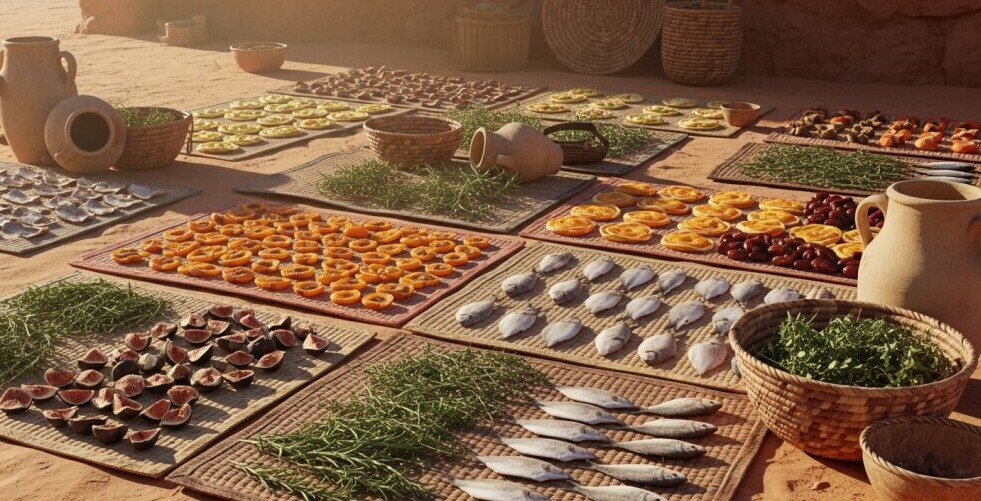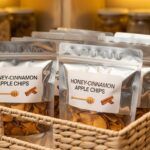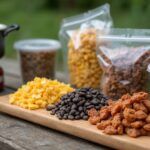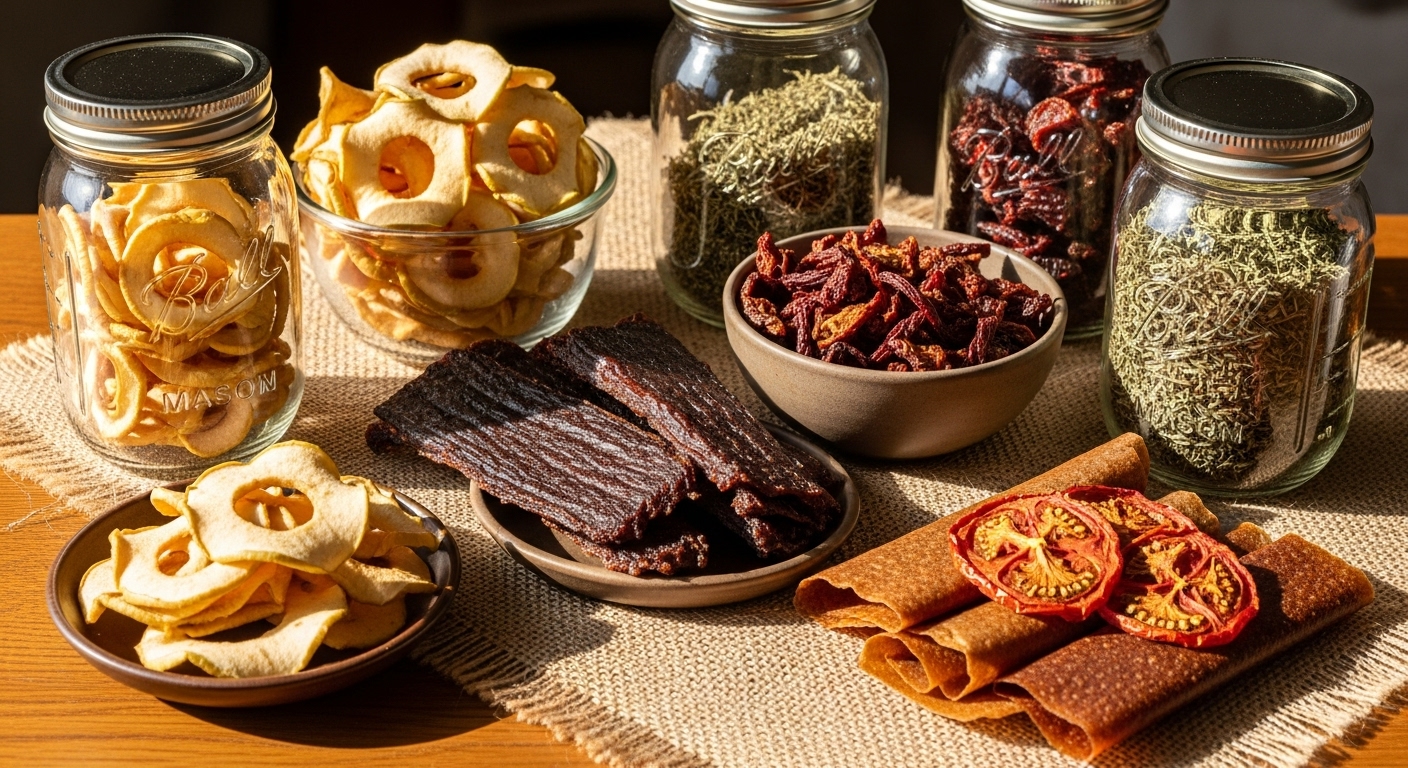 Introduction: The Power of the Sun in Food Preservation
Introduction: The Power of the Sun in Food Preservation
For thousands of years, people have relied on the warmth of the sun to preserve food for leaner times. From the deserts of Egypt to the mountain passes of Peru, sun drying was a lifesaving skill that transformed perishable crops into long-lasting staples.
The principle is simple: remove moisture, and you remove the environment that bacteria and mold need to grow. This timeless technique not only made food safe to store but also concentrated flavor and nutrition.
Today, we can use solar dehydrators, electric dehydrators, or even freeze dryers to achieve the same results—faster and with better control over temperature and humidity. Whether you’re preserving a summer harvest or preparing an emergency pantry, drying is one of the most energy-efficient and rewarding methods you can master.
The Ancient Roots of Drying and Dehydrating
Egyptians laid fish, grains, and figs on woven reed mats under the desert sun, allowing nature to do the work.
In the Andes, the Incas crafted chuño—a form of freeze-dried potato—by using the natural rhythm of freezing nights and warm days to remove moisture slowly.
Native American tribes dried strips of bison and berries to make pemmican, a dense, travel-friendly food rich in nutrients that lasted through cold winters.
Though methods varied by region, the goal was the same: extend food life without refrigeration.
Modern Dehydration: Clean, Efficient, and Reliable
Modern tools like electric dehydrators make the process cleaner, safer, and faster. These devices circulate warm air to evenly draw out moisture. They’re especially useful for humid climates or for drying thicker foods like meat and root vegetables.
If you live off-grid or prefer to save energy, a solar dehydrator is an excellent alternative. These setups use reflective surfaces and vents to capture sunlight and airflow—perfect for herbs, fruits, and thin vegetable slices.
🍎 5 Easy Recipes for Drying and Dehydrating
Below are five recipes inspired by traditional sun-drying methods but adapted for today’s homesteads and modern kitchens.
1. Sun-Dried Tomatoes (Solar or Electric Dehydrator)
Ingredients:
- 3 lbs ripe Roma tomatoes
- 1 tsp sea salt
- Optional: oregano, basil, or garlic powder
Directions:
- Slice tomatoes into ¼-inch rounds.
- Sprinkle with salt and herbs.
- Dry in the sun (covered with mesh) for 1–2 days or in a dehydrator at 135°F for 8–12 hours.
- Store in airtight jars or oil.
Tip: Add to pasta, pizzas, or salads for rich flavor.
2. Dried Apple Rings
Ingredients:
- 4–6 apples, cored and sliced
- Lemon juice and water (to prevent browning)
- Cinnamon (optional)
Directions:
- Soak slices in lemon water for 5 minutes.
- Pat dry and sprinkle with cinnamon.
- Dehydrate at 135°F for 6–8 hours or sun dry for 1–2 days until leathery.
Tip: Great for trail snacks or healthy school lunches.
3. Homemade Jerky (Beef, Venison, or Turkey)
Ingredients:
- 1 lb lean meat, sliced thin
- ¼ cup soy sauce
- 2 tbsp Worcestershire sauce
- 1 tsp liquid smoke (optional)
- 1 tsp garlic powder
- ½ tsp black pepper
Directions:
- Marinate meat overnight.
- Lay strips on dehydrator trays.
- Dry at 160°F for 6–8 hours until firm and dry.
Tip: Store in vacuum-sealed bags for up to 2 months.
4. Dried Herb Mix (Basil, Thyme, and Oregano)
Ingredients:
- Fresh herbs of choice
Directions:
- Rinse gently and pat dry.
- Spread on screens or trays.
- Dry at 95–105°F or hang in a warm, airy room until crisp.
- Crush and store in airtight jars.
Tip: Keep jars in a dark cabinet to retain flavor and color.
5. Fruit Leather (Any Soft Fruit)
Ingredients:
- 3 cups puréed fruit (apples, peaches, strawberries, or plums)
- 1 tbsp honey (optional)
- Lemon juice to taste
Directions:
- Blend fruit and spread onto parchment-lined dehydrator trays.
- Dry at 135°F for 6–8 hours or until pliable.
- Cut into strips and roll up.
Tip: Natural, portable snacks without added sugar.
Storage Tips
- Always cool dried foods before storing to avoid condensation.
- Use airtight glass jars, Mylar bags, or vacuum sealers.
- Keep in a cool, dark location—most dried foods last 6–12 months.
Conclusion
From ancient civilizations to today’s homesteads, the sun remains one of the most reliable partners in preservation. Whether you’re drying tomatoes on a screen or running a dehydrator full of herbs, you’re taking part in an age-old tradition that connects us to simpler, sustainable living.
Drying food is more than a technique—it’s a way to capture the essence of summer and store it for the colder months ahead.
© 2025, Teresa. All rights reserved.









I really enjoyed this article… it beautifully connects the ancient art of sun drying with modern sustainability! It’s amazing to think that something as simple as the sun can still be one of the most effective ways to preserve food. I’ve used my dehydrator for fruits and herbs, but I’ve never tried making jerky or fruit leather — this definitely inspired me to give it a shot!
Thank you! I’m so glad you enjoyed it. ???? It’s amazing how ancient sun-drying still fits perfectly with sustainable living today. Have fun making your first batch of jerky or fruit leather — you’ll love it!